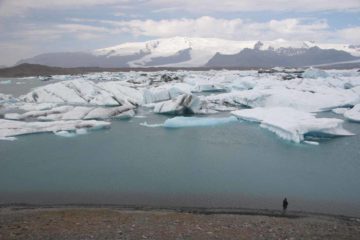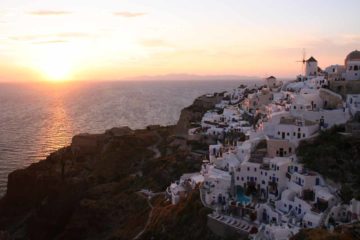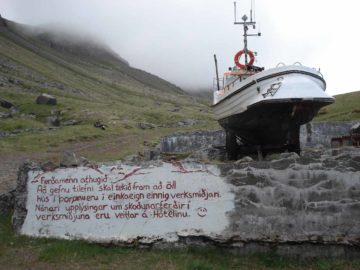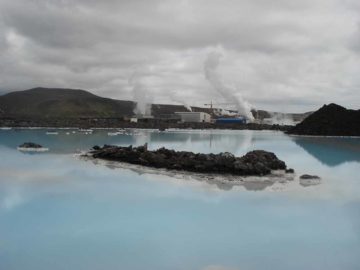About Svartifoss
Svartifoss was perhaps the signature attraction of Skaftafell National Park in the East Region of the country (though it felt more like the southeast region to us if there was such an official designation). The reason why we made this claim was that it possessed pronounced hanging hexagonal basalt columns beneath a 20m tall waterfall.
Although this combination of basalt columns and a waterfall was not unique (as we had seen numerous examples of these around the world, including Iceland itself), this waterfall seemed to get the lion’s share of the popularity and fame. We suspect this might be because the basalt columns had an obvious geometrical shape, the falls was relatively easy to access and admire from up close (while also giving us a bit of a geology lesson), and the falls possessed a year-round flow in a landscape that contained glaciers, volcanoes, and large tracts of black sand [sandur] (i.e. it was quintessential raw Icelandic scenery).
The name of the falls translated into something like “Black Falls” which might be attributable to the darkness of the underlying basalt columns. We’ve typically found such features where there seemed to be evidence of basaltic lava being rapidly cooled by evidence of ice (e.g. the Devil’s Postpile formation in the Eastern Sierras of California as well as Kirkjugólf near Kirkjubæjarklaustur).

In addition to the worthwhile excursion to see this waterfall, we were surprised to find that there were three other waterfalls in the area (Hundafoss, Magnúsarfoss, and Þjófafoss) as well as the glacier Skaftafellsjökull (probably pronounced “SKAP-tuh-fells-yuk-ul”).
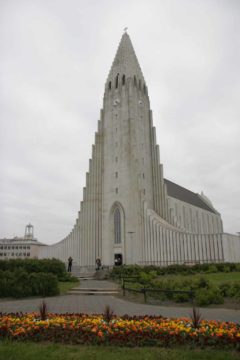
More than two-thirds up the ascent, we noticed a signpost and lookout for Hundafoss, which meant “Dog Falls.” We weren’t certain how this waterfall got its name, but perhaps it had to do with a dog that fell over the falls for one reason or another and was named in its honor. In any case, this was an attractive waterfall where we noticed plunging over a cliff and provided a nice photo stop to break up the uphill hike.
Just minutes after visiting Hundafoss, we then saw another signpost and lookout, but this time it was for the waterfall Magnúsarfoss. This was a bit shorter than Hundafoss, but it featured a profile view of the ravine downstream of the falls while it appeared that some hikers scrambled to get right up to the waterfall’s top.
Beyond Magnúsarfoss, the climb finally started to flatten out. After a few more minutes on the trail, we encountered a trail junction where the trail coming in from the left was from an alternate car park that we noticed tour bus passengers would come from. It turned out that people who came from this path (which we dubbed the “cheater’s path”) would have missed out on Hundafoss and Magnúsarfoss, but they would essentially cut their overall hike that we were doing by around one-half to one-third.
Then, the trail undulated briefly over hills before making a final descent to the base of Svartifoss. We were able to get distant views of the falls before we eventually crossed a bridge and ended up right at the plunge pool of the falls where we noticed chunks of hexagonal blocks that have already chunked off the cliff while some of the pieces had moss growing on them fed by the spray of the falls.
In addition to the Svartifoss hike, we also hiked in the opposite direction from the Visitor Center due east for about a flat 2km round trip, which led to the terminus of the dirty glacier Skaftafellsjökull.
Related Top 10 Lists
No Posts Found
Trip Planning Resources
Nearby Accommodations
This content is for members only. See Membership Options.Featured Images and Nearby Attractions
This content is for members only. See Membership Options.Visitor Comments:
Got something you'd like to share or say to keep the conversation going? Feel free to leave a comment below...No users have replied to the content on this page
Visitor Reviews of this Waterfall:
If you have a waterfall story or write-up that you'd like to share, feel free to click the button below and fill out the form...No users have submitted a write-up/review of this waterfall


